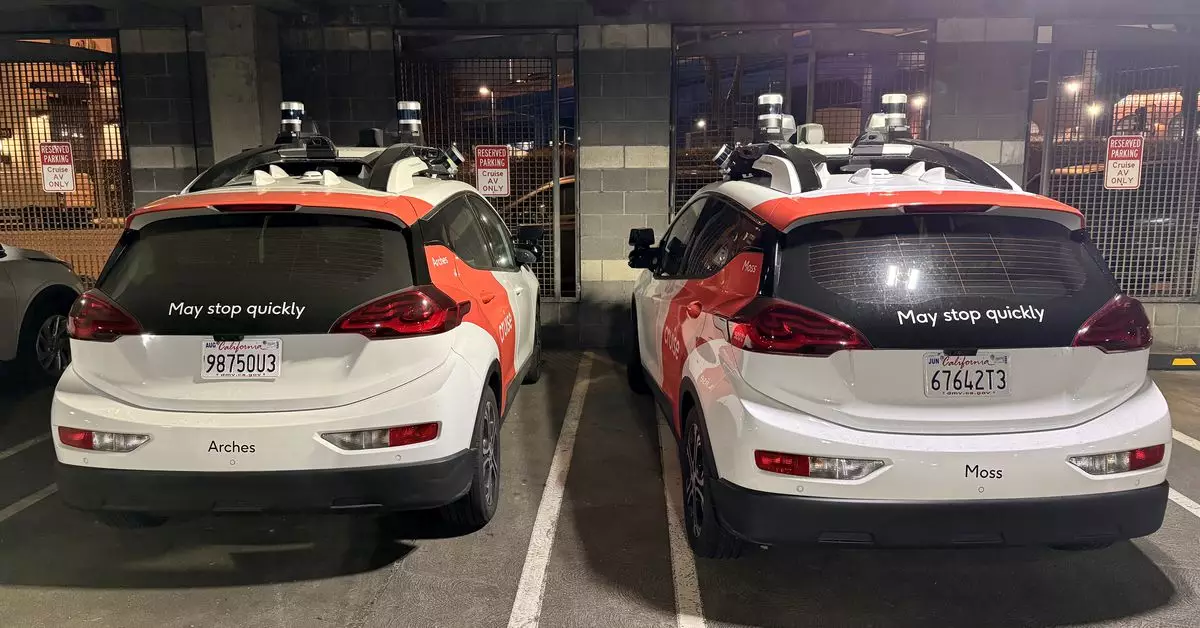In the rapidly evolving landscape of autonomous vehicles (AVs), Cruise, a subsidiary of General Motors (GM), stands out as both a pioneer and a cautionary tale. Despite its prominent position within the industry, recent financial disclosures paint a stark picture of the challenges faced by a company striving to lead the robotaxi revolution. The confluence of technical difficulties and financial strain raises important questions about the future of Cruise and, by extension, the autonomous vehicle market as a whole.
In the third quarter of 2024, Cruise reported a staggering loss of $435 million—although this figure represents a decline in losses from $791 million in the same period the previous year. While some might view this as a silver lining, the reality is that Cruise is ensnared in a cycle of high expenditure without an evident route to profitability. The robotaxi company generated only $26 million in net sales, revealing a significant imbalance between its revenue and operational costs, which amounted to $442 million during the same timeframe. Such financial discrepancies bring to light the precariousness of Cruise’s current business model, especially as it attracts scrutiny from investors who demand tangible results, rather than empty promises.
The financial situation is exacerbated by the company’s operational setbacks. Cruise has halted its driverless services since a tragic incident in October 2023, when one of its vehicles seriously injured a pedestrian. Although the company has resumed testing vehicles in select markets like Arizona and Texas, the suspension of its commercial robotaxi operations has raised concerns about its long-term viability.
An important part of Cruise’s story revolves around its leadership changes. GM CEO Mary Barra has bet heavily on the future of autonomous vehicles, often to the chagrin of investors who are increasingly wary of the downward trajectory of Cruise’s financial performance. The ousting of Cruise’s original founders and the replacement of executive leadership with seasoned professionals from the auto and tech sectors is a significant step aimed at reinvigorating the company’s direction. However, it may also signal a broader internal conflict regarding the vision and feasibility of fully autonomous transportation.
Barra’s commitment to Cruise is evident, but it raises concerns about whether her optimism aligns with reality. While other automotive giants are scaling back their bets on driverless technology, GM continues to invest heavily, despite a staggering total loss of $3.48 billion for Cruise in 2023. The contrast in strategies among the automakers could indicate that GM’s steadfast belief in the potential of AVs might result in forcing Cruise down a doomed path if market conditions do not change.
Cruise’s issues extend beyond operational mishaps and financial losses; regulatory challenges loom large as well. Settlements with state and federal agencies concerning the pedestrian incident contribute further to the fiscal strain. The hefty fines serve as a reminder that, in the quest for innovation, safety must remain paramount. Regaining public confidence in its technology becomes not just a business necessity, but a moral imperative for Cruise.
Moreover, the fundamental economics of driverless cars complicate Cruise’s business model. The exorbitant costs associated with researching, developing, and deploying autonomous vehicles have yet to yield profits for anyone in the industry, including industry giants like Waymo. As Barra suggests potential changes to Cruise’s funding model, it becomes clear that external partnerships may be a necessary lifeline amid these financial tribulations.
The Uncertain Road Ahead
As Cruise charts its path forward, the broader implications resonate throughout the industry. The age of fully autonomous vehicles is still in its infancy, and while optimism will continue to fuel innovation, a more realistic assessment of the challenges is needed. The promise of driverless cars is tantalizing, but promises do not pay the bills or heal reputations tarnished by accidents.
While Cruise may have the ambition to revolutionize transportation, the combination of financial strain, regulatory hurdles, and market skepticism casts doubt on its future. For Cruise to thrive, it must navigate these challenges with agility and transparency, proving that optimism about AV technology can be grounded in a viable financial strategy and commitment to safety. The road ahead is fraught with potential pitfalls, but it also holds the possibility of establishing a legacy in the field of autonomous transportation—if Cruise can successfully steer its ship away from the rocks.

